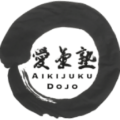Aikido Glossary
Here are some terms that will be helpful to know and reference for your aikido training journey.
- Aiki: Blending, harmony, unification, synchrony.
- Arigato Gozaimas: Thank you very much.
- Atemi: Striking techniques; designed to control or cause Uke to react.
- Boken: Wooden training sword, shaped like a Japanese katana.
- Do: The Way, or Path.
- Dojo: The place where the way is revealed. A place for the strengthening and refinement of spirit, mind and body.
- Gokyo: ‘Fifth Technqiue’ – a wrist and elbow control, usually against a knife.
- Hakama: Formal, wide pleated pants worn over the dogi (uniform).
- Hanmi: The relaxed triangular stance of Aikido, with one foot forward.
- Hanmi Handachi: Techniques practiced with nage sitting and uke standing.
- Ikkyo: ‘First Technique’, an arm control.
- Irimi: Entering, moving into and through the line of attack
- Jiyu Waza: Freestyle technique. In testing usually against one opponent.
- Jo: Short staff.
- Jo dori: Techniques of staff taking.
- Kaitennage: ‘Wheel throw’ – pressing uke’s arm behind and over their back.
- Kamae: Natural ‘readiness’ stance. With a weapon: Jodan kamae – high position; Chudan kamae- middle position; Gedan kamae – lower position.
- Kata dori: Shoulder grab.
- Katate dori: Wrist grab.
- Katate dori ryote mochi: Grabbing your partner’s wrist with both hands.
- Keiko: Study or practice, to refine our spirit.
- Kohai: Junior student. Those who begin their study of Aikido after you.
- Kokyu: The power of breath, renewal of life force. Also, timing or rhythm.
- Kokyu Tanden Ho: Paired, two-hand grab sitting exercise.
- Kosa dori: Cross hand grab.
- Koshi Nage: ‘Hip Throw’.
- Kotaegaeshi: ‘Returning Wrist’ – a wrist-turning throw to the rear.
- Kubi shime: A choke hold.
- Kumi Jo: Paired jo practice.
- Kumi Tachi: Paired sword practice.
- Kyu: White belt grade.
- Munetsuki: A straight punch to the chest or solar plexus.
- Nage: A throw. One who throws.
- Nikkyo: ‘Second Techqnique’ – a wrist joint-lock control.
- Omote: To the front.
- O Sensei: Great teacher – the title used for the Founder of Aikido.
- Randori: Free technique against multiple attack.
- Rei: To bow.
- Ryote dori: Grabbing both wrists.
- Ryokata dori: Grabbing both shoulders.
- Sankyo: ‘Third Technique’, a wrist-joint twisting technique.
- Sempai: Senior student: Those who began their study of Aikido before you.
- Seiza: Formal sitting position.
- Sensei: Teacher, one who gives guidance along the way.
- Senshin: A purified heart and spirit; enlightened attitude
- Shihonage: ‘Four corner throw’ – a wrist / elbow lock, throw, and pin.
- Shikko: Knee walking exercise; trains student to move from the tanden.
- Shomen: The place housing the picture of O Sensei and the spirit of Aikido.
- Shomenuchi: Downward strike or cut to the top of the head.
- Shomentsuki: Thrust / punch between the eyes.
- Shinai: Split bamboo practice sword.
- Shugyo: The daily work to refine and purify the quality of life.
- Sumi O-Toshi: ‘Corner Throw’, sometimes a locked-elbow throw.
- Suwariwaza: Kneeling techniques.
- Tachi dori: Techniques of sword taking.
- Taijutsu: Empty handed techniques.
- Tanden: The hara, the center of mass, located about where the belt is tied.
- Tanto: Knife. In Aikido, we use a wooden tanto for training.
- Tanto dori: Techniques of knife taking.
- Tenkan: Pivoting, turning to dissipate force.
- Tenchinage: ‘Heaven and Earth throw’
- Uke: One who receives. The person being thrown.
- Ukemi: Techniques of falling, rolling, and protecting yourself.
- Ushiro: Attacking from the rear
- Ura: To the rear.
- Yokomenuchi: A diagonal cut or strike.
- Yonkyo: ‘Fourth Technique’ – a wrist pressure point technique.
- Zanshin: Awareness of surroundings at all times (subconsciously).
